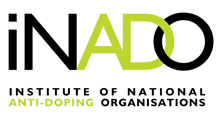Use of forensic investigations in anti-doping / Nicolas Jan, François Marclay, Natalie Schmutz, Matt Smith, Alain Lacoste, Vincent Castella, Patrice Mangin. – (Forensic science international (2011) 213 (10 August) : p. 109-113)
doi: 10.1016/j.forsciint.2011.07.037. Epub 2011 Aug 10.
The fight against doping is mainly focused on direct detection, using analytical methods for the detection of doping agents in biological samples. However, the World Anti-Doping Code also defines doping as possession, administration or attempted administration of prohibited substances or methods, trafficking or attempted trafficking in any prohibited substance or methods. As these issues correspond to criminal investigation, a forensic approach can help assessing potential violation of these rules. In the context of a rowing competition, genetic analyses were conducted on biological samples collected in infusion apparatus, bags and tubing in order to obtain DNA profiles. As no database of athletes' DNA profiles was available, the use of information from the location detection as well as contextual information were key to determine a population of suspected athletes and to obtain reference DNA profiles for comparison. Analysis of samples from infusion systems provided 8 different DNA profiles. The comparison between these profiles and 8 reference profiles from suspected athletes could not be distinguished. This case-study is one of the first where a forensic approach was applied for anti-doping purposes. Based on this investigation, the International Rowing Federation authorities decided to ban not only the incriminated athletes, but also the coaches and officials for 2 years.
